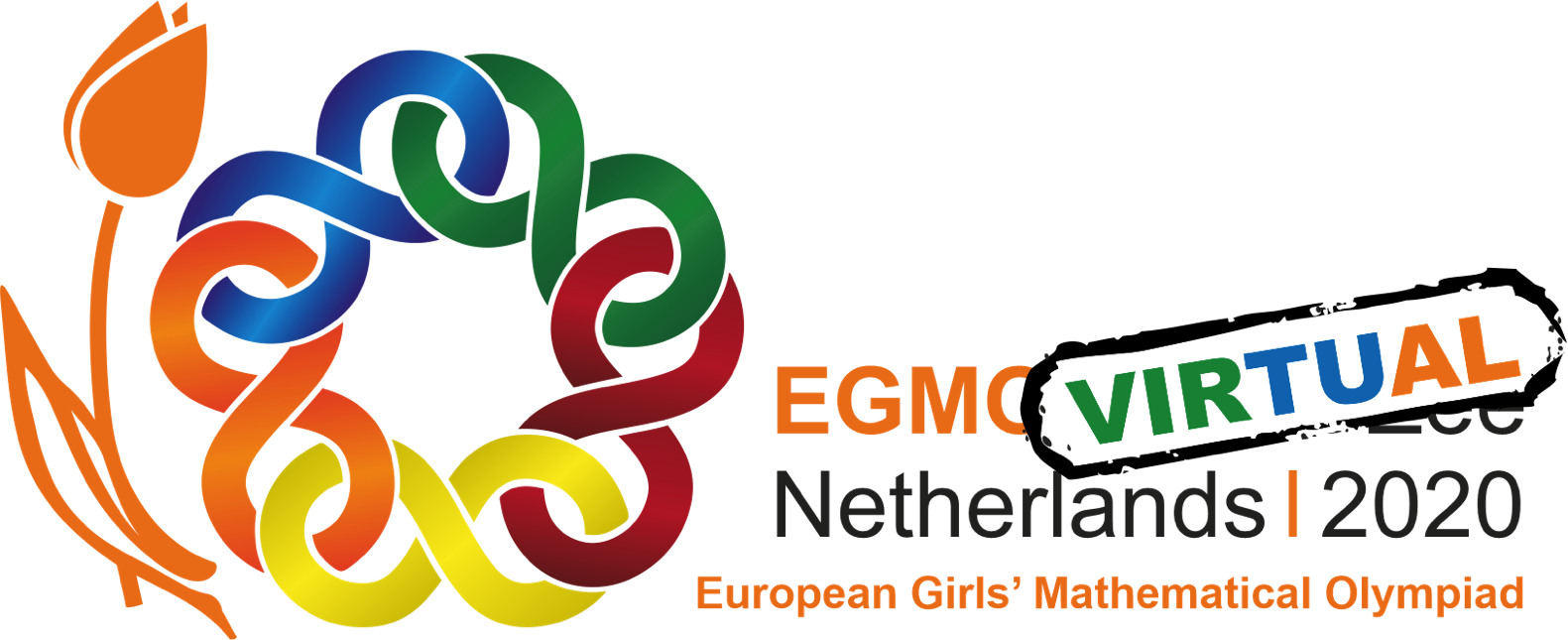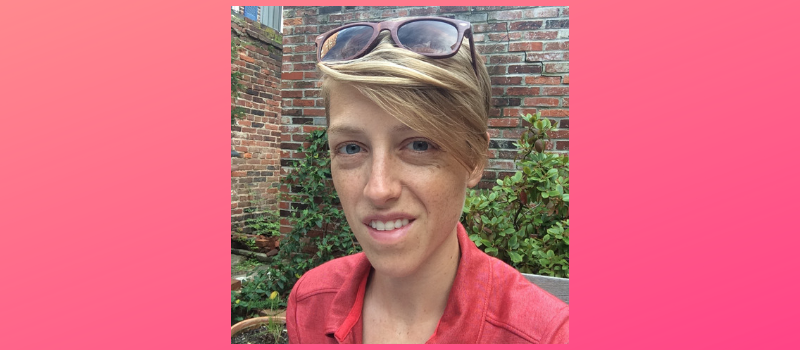(Interview by Mireia Martínez i Sellarès)
Emily Riehl is a category theorist. This means that she studies a kind of mathematical objects called categories. A category consists of a collection of objects and a collection of arrows between these objects. So, for example, there is a category that has natural numbers as objects and, for any two numbers x and y, an arrow from x to y if x divides y: it has 3 → 6 and 5 → 95, but no arrow between 4 and 9, or between 21 and 22. The objects of a category can be anything: numbers, functions, sets… By focusing on the relationships between objects instead of on the objects themselves, categories turn out to be very useful to overview different fields of mathematics and to see similarities and differences between them.
More specifically, Emily works on higher category theory. This is a very abstract, fairly new branch of mathematics. A big part of her work involves laying down the foundations of this area of knowledge and making it accessible to other mathematicians. In this spirit, she has written two books (“Categorical Homotopy Theory” and “Category Theory in Context”) and is in the process of writing a third one with Dominic Verity (“Elements of Infinity-Category Theory”).
We got to talk to her at the end of June in Leeds, UK, when she was there as a speaker in the Higher Topos Theory and Univalent Foundations summer school. This is the first part of that interview, make sure to come back next week for part two!
Leeds, June 27, 2019, around 5pm.
M: This interview is of course in the context of this Mathematical Olympiad for girls and the reason why this started was to create kind of a safe space just for girls (and ultimately increase the number of female participants of the IMO, the International Mathematical Olympiad), so I would be interested to hear your thoughts on whether something like this is necessary at all or not.
E: (Thinks a bit.) I mean, “necessary” is kind of a strong word. You know, when I was in school I never did any sort of “math contest for girls” or anything like that. I think the girls math olympiads were just starting up.
M: Did you do any kind of contest?
E: Yeah, I did. I mean, I wasn’t good enough to be at Olympiad level, but just below. But as a research mathematician, there are these Women in Topology conferences and those are really profoundly wonderful. Well, actually I think part of why the Women in Topology is so successful is that it’s not just about getting together and telling people about your research, it’s really designed around doing mathematics. At the conference you have a problem that you are trying to solve, and you have a team, and you have some few months’ notice so you get some time to do the background reading and stuff like that.
So, you know, even without the gender aspect that would be a cool setup, and the guys I talk to are a bit jealous of this model –which is fair enough because it’s great! But there is something really… I don’t know, somehow the environment is way more supportive and everybody has a lot of fun, and the nature of the dialogue is different.
So I guess I totally support this “safe space” model because I’ve been in that environment and it’s awesome.
M: Yeah, I can totally imagine the appeal of an environment in which you feel like you are not standing out just because you are a woman.
E: I mean, one thing is that there’s huge differences in the proportions of female mathematicians across subfields. So, of the types of conferences I go to, Homotopy Type Theory is by far the worst. Typically it’s just me and Paige [North], and maybe one other person. Then Higher Category Theory is also very… (Thinks.) It’s probably even worse, actually, me and Julie [Bergner] are the two who will speak at a Higher Category Theory conference. Simona Paoli also, but she studies a different flavour of higher categories.
And then Algebraic Topology is much, much, much better. Part of the reason is that there were some senior women in the generation before me. They’re all rock stars and they’ve been really proactive in trying to support and nurture postdocs. Some of these interventions have really been targeted at helping you bridge from one career stage to the next: so when you’re a grad student, helping you get a postdoc; when you’re a postdoc, helping you get a permanent job; when you’re at a liberal arts college, helping you get tenure, and so on. So if you go to an Algebraic Topology [event, the percentage] is like 25%, so it’s a totally different vibe.
M: So would this support the idea that it’s valuable to empower mathematicians in underrepresented areas?
E: Yes, and proactively, because if you don’t, then we’re sort of just sitting there. You know, I think Category Theory has been at 5 or 10% for decades, which isn’t terrible, but it’s not improving.
M: Do you think it is not? I read that you are trying to establish a Category Theory group at your university.
E: I guess that’s more focused on supporting the science. We had a female postdoc there but she’s gone now, and my PhD students are all men. It’s hard [to do something] at any one place or at any one institution. I do think you can make an impact and everybody should try, but you really need to make this interventions at a broader, multi-institutional, multi-city level, because you just don’t have the numbers at any one place. Because everyone is where they are, and not everyone is going to be able to move to, like, the US necessarily.
M: So was [being a woman] ever a factor to you or did it influence your choices at some point in your career? I am asking because, sometimes, if I have a day where I am hesitating whether to pursue an academic career or not, I will have a thought like: “Whatever! I have made it this far as a woman so I should stay just to make a statement.” Which is crazy because it has nothing to do with academia itself! But it does fuel me at times.
E: Yeah, I think everyone feels that way, we all do feel the pressure to represent.
M: So do you have any specific moments where you remember that this was relevant for you?
E: I mean, it definitely affects your experience day to day, when for example being at a conference is a little less fun that it would’ve been otherwise. That’s the bad aspect of it.
Another thing that I’ve thought about consciously, both as somebody who attends lectures and now also somebody who is teaching, is that being a visible minority in any sense makes it much, much harder to ask a question in a lecture. Here’s an anecdote from the Connections for Women conference at MSRI in 2014. There were, like, 90% women in the room and a couple of men, and all of the speakers were female –maybe all but one–, and at some point we realised that after these research talks it was only men asking questions, even though they were a massive, massive minority.
I think this is because when you grow up feeling that you fit in, it’s just a much more comfortable thing. So since that point I made a decision to always push myself to ask the question: if I formulate it, I make myself say it. And I’ve embarrassed myself a bunch of times since then (laughs), but after a while it becomes kind of a habit and it’s much easier now. I still view it as a sort of performative or political thing: if I’m in the room and asking questions, it’s going to make it much easier for the other women in the room to do exactly the same thing.
M: That’s so true!
E: So I think that’s really important. And then when I teach, I explain this explicitly to my students. I say, “For some of you it’s going to be really, really challenging to ask a question in class, but it’s also really important that you get over that and make yourself do it.” You know, in a small class I’ll have a participation requirement that absolutely everybody ask a question. I could be something like “I don’t understand what you just said”, or “Did you write the wrong thing here?”, “I can’t read your handwriting”, so it’s a really, really low barrier, but once you start asking questions like that and the world doesn’t end, then it gets easier. Usually by the end of the semester I’ve got everybody. And the students, in the end-of-course-feedback, will say that it was a breakthrough. I mean, anybody can do this, but you need to explicitly acknowledge it with your students. In a large lecture course, I use this xkcd cartoon called “How It Works” ; so in a big calculus class I’ll show this on a slide: it’s two stick figures, and one of them has got a bit of chalk and just drew some integral, and the other one says “Wow, you suck at math!”. And then there’s an absolutely identical panel and the only difference is that it’s a female figure who drew the integral, and now the comment is “Wow, girls suck at math!”. I use that to illustrate exactly that point.
Part 2 of the interview coming up next week!


